13 Types of Blackbirds in West Virginia (With Pictures)
Last Updated on
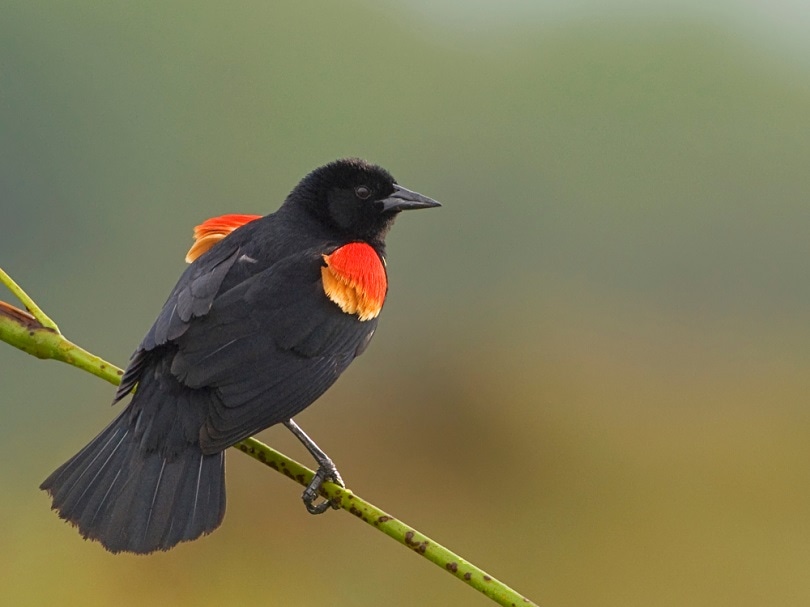
There are various species of blackbird that can be seen in West Virginia, but some are only spotted when they stray from their own territory and others are considered to be at risk or in danger. Below are 13 types of blackbirds in West Virginia that you are likely to see in yards or while out in parks, woods, or fields.

13 Types of Blackbirds in West Virginia
1. Baltimore Oriole
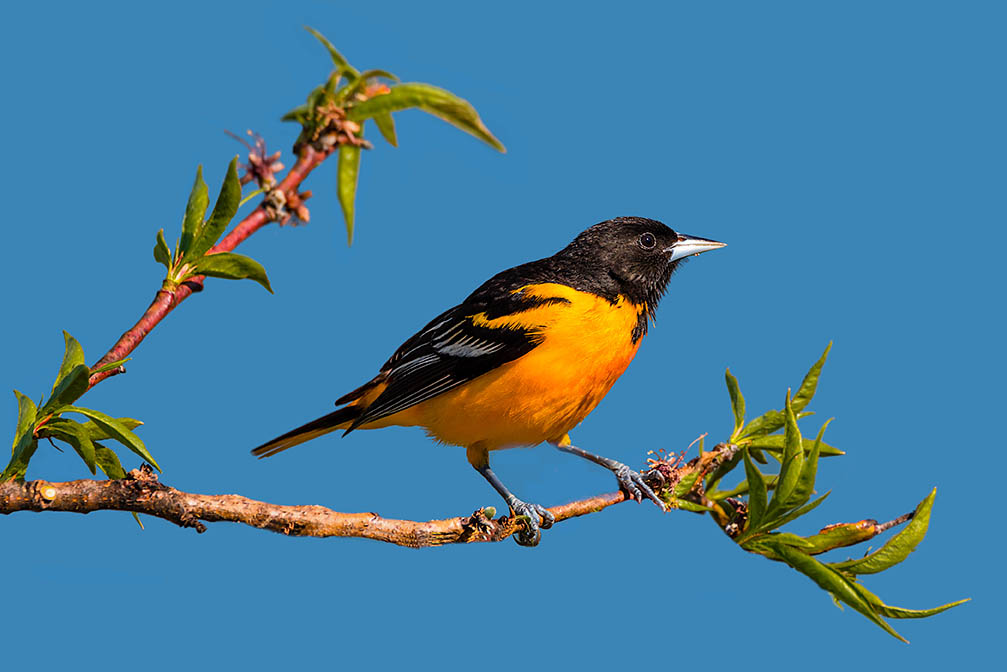
| Latin name: | Icterus galbula |
| Size: | 7 inches |
| Weight: | 1.2 ounces |
Although Baltimore Orioles can be spotted throughout Virginia, they are typically seen in the West, especially during the breeding season. They’re considered a sign of spring with males and females being very colorful. The male is orange, black, and white, while the female has a yellow belly. Baltimore Orioles are usually migratory and can leave in July. When they are in the state, they are seen in woodland and on the banks of rivers.
2. Boat-tailed Grackle

| Latin name: | Quiscalus major |
| Size: | 12 inches |
| Weight: | 5 ounces |
The Boat-tailed Grackle is a long-legged songbird that is not seen too frequently in West Virginia, but it does stay all-year round which increases the chances of spotting one. They especially live near saltwater but may also be seen in parks and cities scavenging for scraps. The male is a deep black color, while the female is more of a brown color.
3. Bobolink

| Latin name: | Dolichonyx oryzivorus |
| Size: | 7 inches |
| Weight: | 1.5 ounces |
The Bobolink is most often seen in September and is only usually spotted during spring and fall on their migratory journey. The male has a distinctive yellow patch on the back of their head that looks like a blonde wig. Its body is black, and it has a white flash on the wings. The female has brown streaks.
4. Brewer’s Blackbird
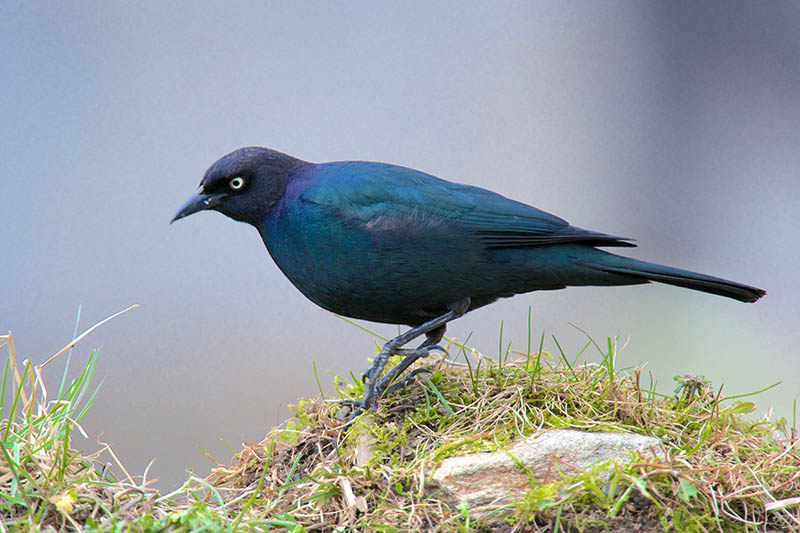
| Latin name: | Euphagus cyanocephalus |
| Size: | 9 inches |
| Weight: | 2.5 ounces |
The Brewer’s Blackbird is a regularly spotted West Virginia resident, seen in winter, and commonly found in grasslands, marshes, backyards, parks, and near the coast. The male is black with purple on its head and a green glow across its body. The female is a plain brown.
5. Brown-headed Cowbird

| Latin name: | Molothrus ater |
| Size: | 8 inches |
| Weight: | 1.5 ounces |
The Brown-headed Cowbird is a regular spot during the summer. These migratory birds are rarely, but still occasionally, seen during the winter months. As the name suggests, these birds are often seen around cattle. Also, as the name suggests, the male is black all over but with a brown head. The female is brown with some differences in color across the body.
6. Bullock’s Oriole

| Latin name: | Icterus bullockii |
| Size: | 7 inches |
| Weight: | 1.2 ounces |
The Bullock’s Oriole is another brightly colored oriole. This particular species doesn’t really live in West Virginia but may occasionally be spotted here. Males have black and white wings with orange bodies and orange and black heads. Females have light brown bodies, brown wings, and yellow faces and tails. They can be found in virtually any type of habitat.
7. Common Grackle

| Latin name: | Quiscalus quiscula |
| Size: | 12 inches |
| Weight: | 4 ounces |
The Common Grackle is one of the most commonly spotted blackbirds in West Virginia, although its numbers and decline in numbers mean that it is actually considered under threat. Most migrate during winter but some do remain, so the Common Grackle can be seen any time of the year. The male has a black body, but it has a multi-colored sheen. The female is a duller black finish.
8. Eastern Meadowlark
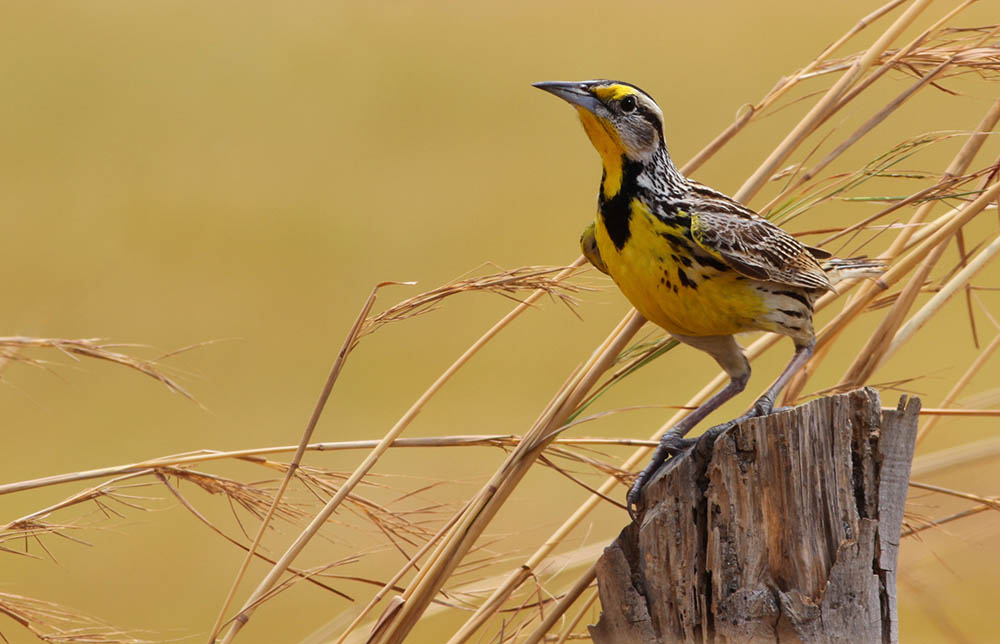
| Latin name: | Sturnella magna |
| Size: | 9 inches |
| Weight: | 5 ounces |
The Eastern Meadowlark’s numbers are in danger, but this bird’s presence signifies the beginning of spring, and it puts on a show to welcome the change of season. The Eastern Meadowlark is a prolific songbird that can belt out more than 100 songs and with a yellow underneath that is difficult to miss.
9. European Starling
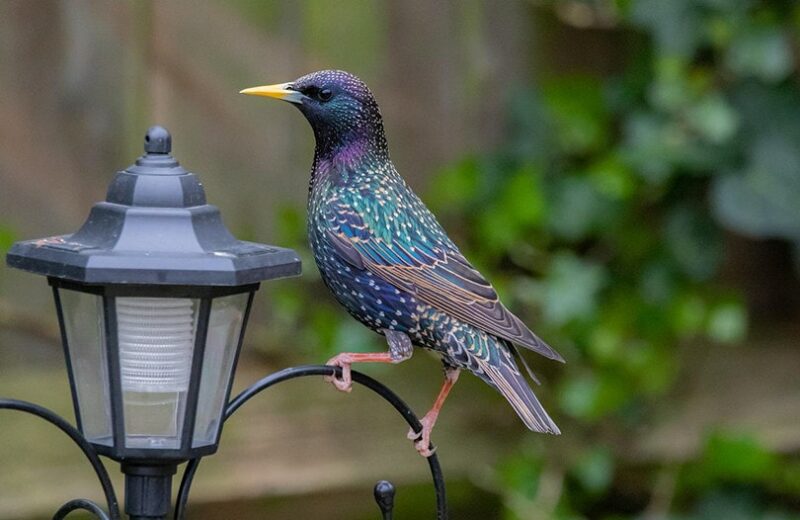
| Latin name: | Sturnus vulgaris |
| Size: | 8.5 inches |
| Weight: | 3 ounces |
Although not native, the European Starling is one of the most commonly seen songbirds in the state. The starling is considered a pest and they are often seen, or rather heard, in large flocks making a lot of noise. They can mimic the songs of other birds and while they are considered undesirable by many, their murmuration is a sight to behold.
10. Orchard Oriole
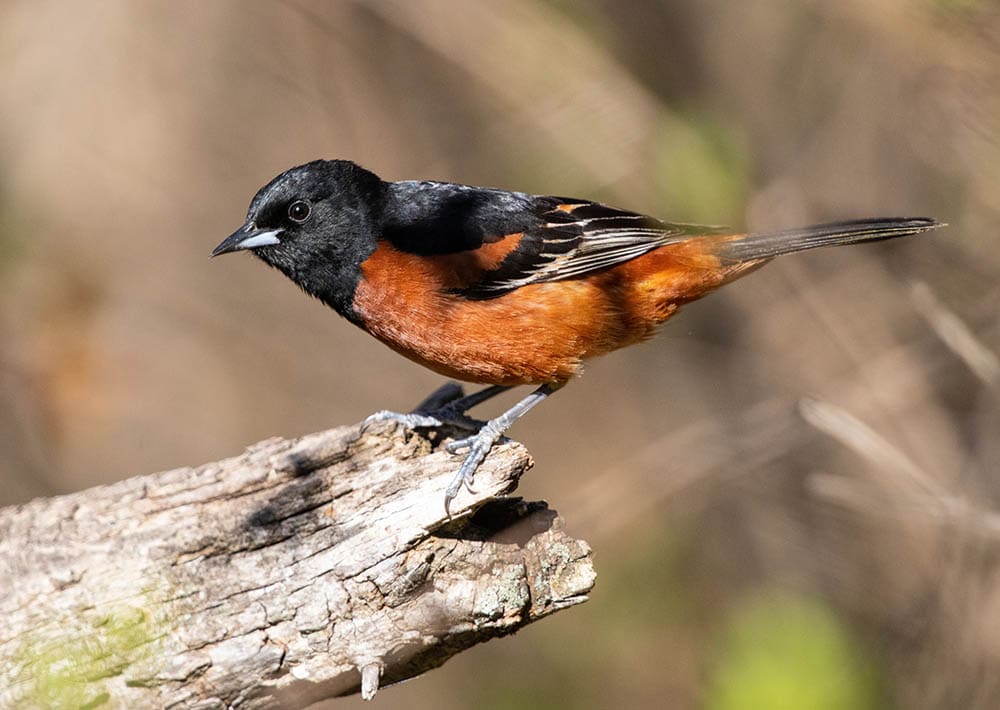
| Latin name: | Icterus spurius |
| Size: | 6 inches |
| Weight: | 0.8 ounces |
The Orchard Oriole is a reasonably common sight in West Virginia, primarily because it is here for around 8 months of the year and because both the male and female are boldly colored. The male has a black back, head, and tail, with an orange-brown chest. The female has banded brown wings and a tail with a yellow breast, face, and head.
11. Red-winged Blackbird
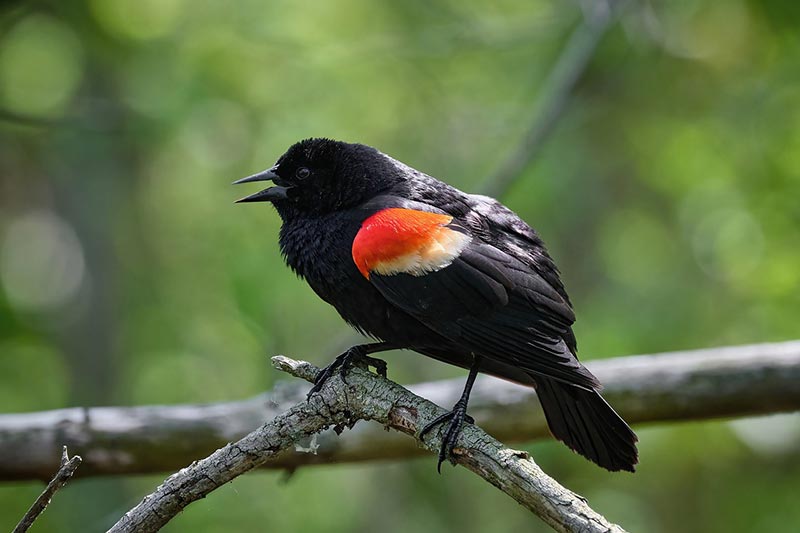
| Latin name: | Agelaius phoeniceus |
| Size: | 8 inches |
| Weight: | 2.5 ounces |
The Red-winged Blackbird is another commonly seen West Virginia blackbird. Some migrate, which means that this species is most often seen during the summer months, although they may also visit gardens in the winter. They can be seen in fields, marshes, and on telephone wires. They are black with red wings.
12. Rusty Blackbird
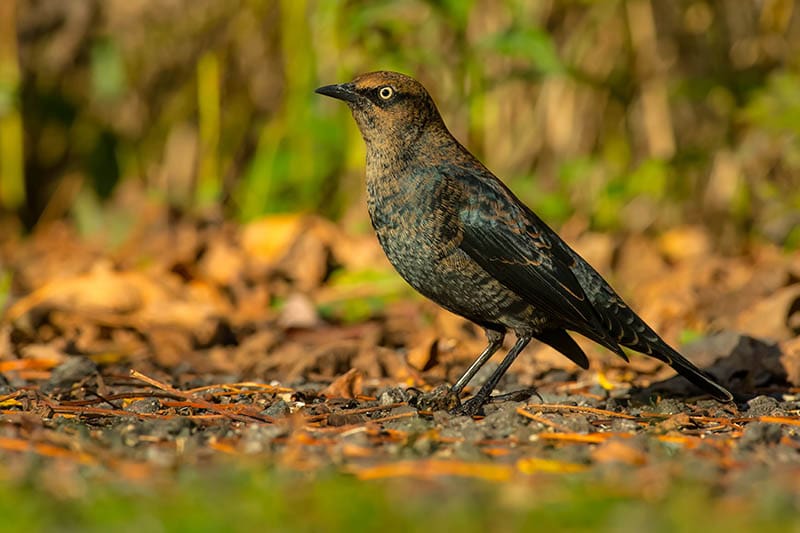
| Latin name: | Euphagus carolinus |
| Size: | 9 inches |
| Weight: | 2.5 ounces |
The Rusty Blackbird lives in Canada and migrates to Virginia in the winter months. It can be seen in marshes and swamps, and other wet boggy areas. The Rusty Blackbird is considered vulnerable after its numbers have been decimated over the past four decades. Males and females have a rusty edge to their feathers, giving them their common name.
13. Yellow-headed Blackbird
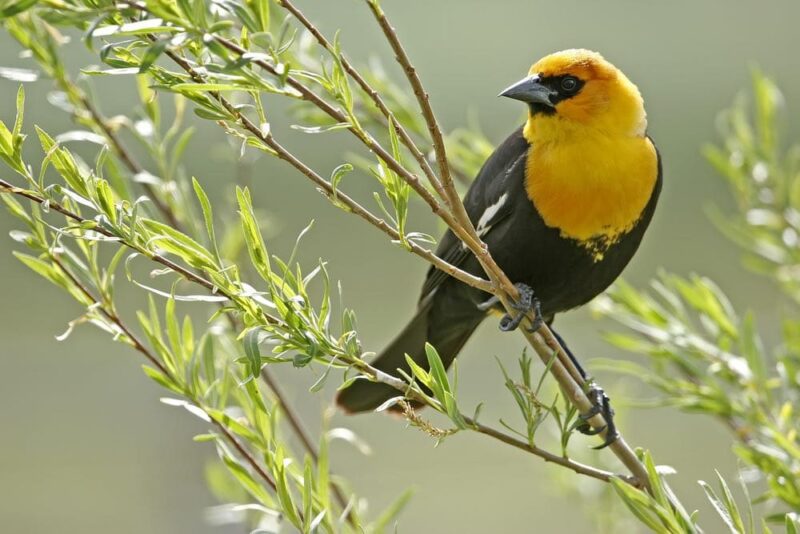
| Latin name: | Xanthocephalus xanthocephalus |
| Size: | 9 inches |
| Weight: | 3 ounces |
The Yellow-headed Blackbird is one of the rarest blackbirds in West Virginia but it can very rarely be spotted, especially during the summer months when it feeds on insects in fields and grasslands. The species has a black body and a bright yellow head. It also has white patches on the wings. The female is brown with a light yellow head.
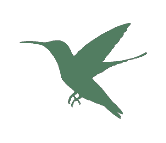
Final Thoughts
Blackbirds are a common sight in West Virginia and the US, and there are numerous species that are found in the area. Above are 13 species including those that are native to West Virginia and some other species that are most likely to be seen as they pass through or into the area.
You might be interested in: 5 Types of Hummingbirds in West Virginia (With Pictures)
Featured Image Credit: Agami Photo Agency, Shutterstock
Table of Contents
About the Author Robert Sparks
Robert’s obsession with all things optical started early in life, when his optician father would bring home prototypes for Robert to play with. Nowadays, Robert is dedicated to helping others find the right optics for their needs. His hobbies include astronomy, astrophysics, and model building. Originally from Newark, NJ, he resides in Santa Fe, New Mexico, where the nighttime skies are filled with glittering stars.
Related Articles:
Monocular vs Telescope: Differences Explained (With Pictures)
10 Types of Hummingbirds in Arkansas (With Pictures)
8 Types of Hummingbirds in Nebraska (With Pictures)
5 Types of Hummingbirds in Idaho (With Pictures)
3 Types of Hummingbirds in Mississippi (With Pictures)
8 Types of Hummingbirds in Kansas (With Pictures)
5 Types of Hummingbirds in West Virginia (With Pictures)
5 Types of Hummingbirds in Ohio (With Pictures)
